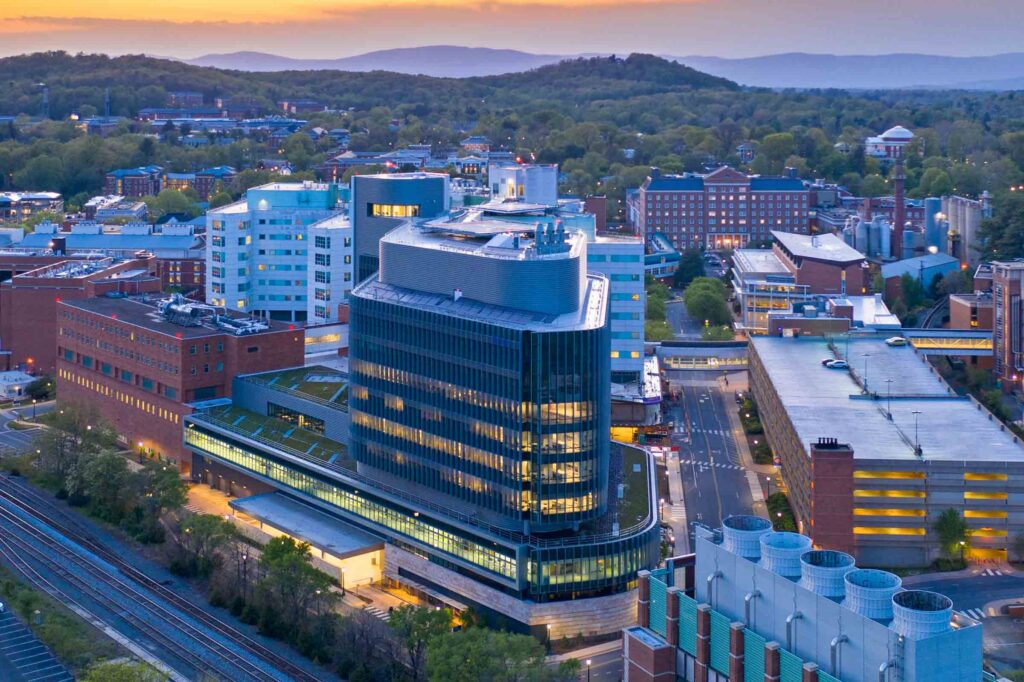Educational Facilities
University of Virginia Health - Charlottesville, Virginia

The primary clinical training site for the residency program is University of Virginia (UVA) Health, a Level 1 Trauma Center which opened in March, 1989. UVA serves as a regional acute care referral center as well with a large central Virginia catchment area. The Emergency Department is located on the first floor of the hospital expansion and has 70 patient beds.
The UVA Health Emergency Department includes:
-
- Adult emergency department with bedside registration, four operating rooms, and a 10-bed clinical decision-making unit
- Children’s emergency services area, separate from adult emergency patients, with emergency specialists for patients under 20 years of age
- Rapid Medical Evaluation area, a 12-bed section designed to address minor emergencies like sore throats, fevers, sprains and lacerations
- Dedicated 8-bed section for behavioral and mental health emergencies
- Interventional cardiology and radiology suites
The annual department census is over 70,000, 20% of those are pediatric patients, and 15% are over 65 years old. Of the total patient census, 27% are admitted with 12% to an intensive care unit and 0.5% directly to the OR. There are 2,200 yearly trauma admissions (1834 in 1997 vs. a mean for US Level 1 trauma centers of 1830) through the ED (81% blunt, 19% penetrating). The UVA ED patient mix crosses all socioeconomic borders with a remarkably diverse patient population.
Inova Fairfax Medical Campus - Falls Church, Virginia
During the third clinical year, residents perform a 1 month rotation in the Pediatric Department at Inova Fairfax Medical Campus in Falls Church, VA. Inova is located about 2 hours away north of Charlottesville, right outside Washington, DC.
Visit the Inova Fairfax website for more information.
Augusta Health - Fishersville, Virginia
During the second clinical year, residents perform a 1 month rotation in Community/Rural Medicine at the Augusta Health Medical Campus in Fishersville, VA. Augusta Health is located about 1 hour away west of Charlottesville, in Virginia’s Shenandoah Valley.
Visit the Augusta Health website for more information.
Additional Rotations
Other operations of Emergency Medicine to which residents will be exposed include:
- Optional international electives
- Pegasus Critical Care Transport Aeromedical Program (residents are not required to fly)
- Lifeguard Aeromedical Transport
- Prehospital EMS Program
- Blue Ridge Poison Control Center and Medical Command & Communications
- Ultrasound Program
The Department of Emergency Medicine considers training in ultrasound a required piece of resident education. During training, residents will be expected to become skilled in bedside clinical ultrasound for the procedural assistance and for the rapid triage of the critically ill or undifferentiated patient.
It is expected that residents should be proficient with the technical aspects of obtaining quality images in adults and children, understand the indications and limitations of study and be skilled in the administrative responsibilities of this technology. Ultrasound imaging equipment is also available to assist with ongoing basic science and clinical research. Residents are encouraged to participate in this research.
